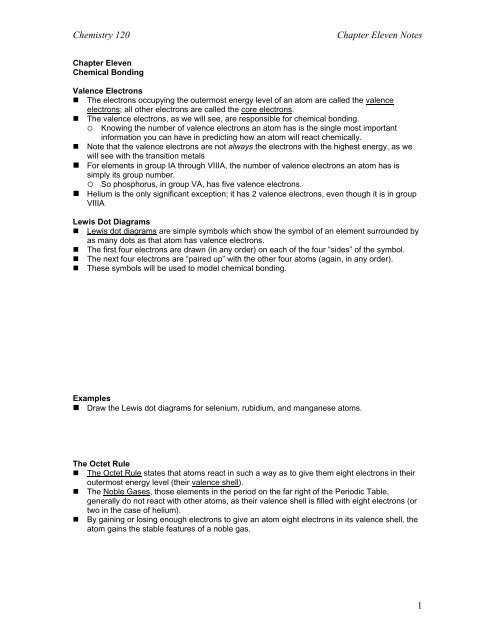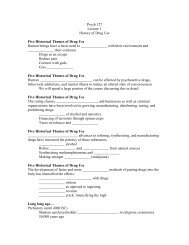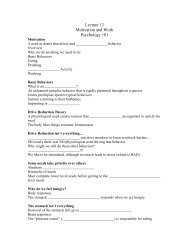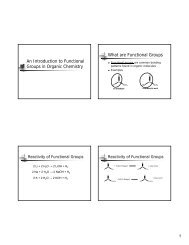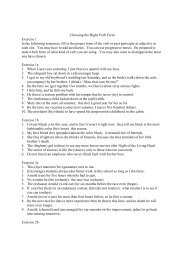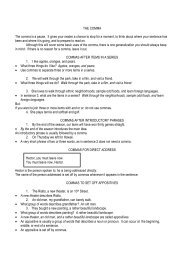You also want an ePaper? Increase the reach of your titles
YUMPU automatically turns print PDFs into web optimized ePapers that Google loves.
<strong>Chemistry</strong> <strong>120</strong><br />
Chapter Eleven <strong>Notes</strong><br />
Chapter Eleven<br />
Chemical Bonding<br />
Valence Electrons<br />
• The electrons occupying the outermost energy level of an atom are called the valence<br />
electrons; all other electrons are called the core electrons.<br />
• The valence electrons, as we will see, are responsible for chemical bonding.<br />
◦ Knowing the number of valence electrons an atom has is the single most important<br />
information you can have in predicting how an atom will react chemically.<br />
• Note that the valence electrons are not always the electrons with the highest energy, as we<br />
will see with the transition metals<br />
• For elements in group IA through VIIIA, the number of valence electrons an atom has is<br />
simply its group number.<br />
◦ So phosphorus, in group VA, has five valence electrons.<br />
• Helium is the only significant exception; it has 2 valence electrons, even though it is in group<br />
VIIIA<br />
Lewis Dot Diagrams<br />
• Lewis dot diagrams are simple symbols which show the symbol of an element surrounded by<br />
as many dots as that atom has valence electrons.<br />
• The first four electrons are drawn (in any order) on each of the four “sides” of the symbol.<br />
• The next four electrons are “paired up” with the other four atoms (again, in any order).<br />
• These symbols will be used to model chemical bonding.<br />
Examples<br />
• Draw the Lewis dot diagrams for selenium, rubidium, and manganese atoms.<br />
The Octet Rule<br />
• The Octet Rule states that atoms react in such a way as to give them eight electrons in their<br />
outermost energy level (their valence shell).<br />
• The Noble Gases, those elements in the period on the far right of the Periodic Table,<br />
generally do not react with other atoms, as their valence shell is filled with eight electrons (or<br />
two in the case of helium).<br />
• By gaining or losing enough electrons to give an atom eight electrons in its valence shell, the<br />
atom gains the stable features of a noble gas.<br />
1


